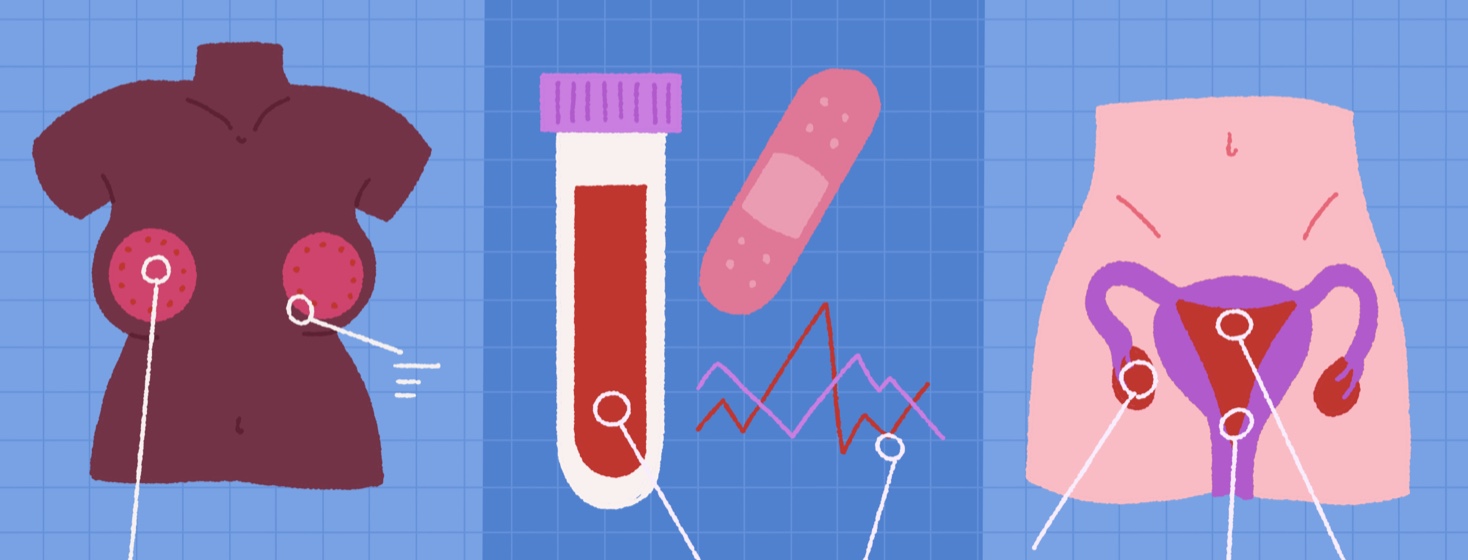Women’s Health 101: Understanding the Basics with Dr. Sheridan
This article was originally published on Endometriosis.net and written by Dr. Audrey Sheridan, who is a board-certified OBGYN.
We’re celebrating Women’s Health Month, so I’m going to be talking about some subjects that are typically associated with “women’s health.” But these topics aren’t just important to those who identify as female. People across the gender spectrum as well as their partners, children, and colleagues can support themselves and people they care about with this information too.
Getting started
Maybe you are now faced with a health problem, and you’re not sure what to do. Or you finally have access to and space for some preventive health care that you haven’t been able to prioritize in the past.
Where to begin? In general, you can start with an appointment in either the Family Medicine (aka GP) or Women’s Health (OBGYN) departments. Whether you see a doctor, nurse practitioner (NP), or physician’s assistant (PA), any of these care providers can get you started with a general physical exam. They’ll likely ask about your family history and arrange any needed tests for preventive care. They can take steps to figure out your concerns and help you get to the right specialist if needed.
What do you mean, I don’t need a Pap smear?
Keeping track of when to start different kinds of can feel complicated. It used to be you just expected to go in for a checkup every year. But recommendations have changed over time, as new information and new kinds of tests become available. And they’re different for different age groups. Here’s an outline of some of the most common. For an overview, the Women's Preventive Servies Initiative offers a helpful chart about what should be included in a checkup throughout a woman’s life.1
Cervical cancer screening
Pap tests are the classic women’s health test. They check for precancerous cells on the cervix, which are caused by the HPV virus. When found early, these cells can be treated to keep them from becoming cancer. The good news is that the current Pap test is not needed every year. Looking at the cells plus testing the sample for worrisome strains of HPV is called “co-testing.”
When do you need to start having Pap tests? And how often? As long as your tests are normal, the recommendations are:2
- Start Paps at age 21. From age 21 to 29, get a Pap every 3 years.
- From age 30 to 65, you have options: co-testing (Pap + HPV test) every 5 years, HPV test only every 5 years, or Pap test only every 3 years.
- After age 65, if your risk is low, you may be able to stop having Pap tests. Talk to your care provider about the best plan for you.
Lowering your chance of cervical cancer
There are several ways to lower your chance of cervical cancer:3-5
- The HPV vaccine helps protect against precancerous change and cancer. It works best if a person takes it before becoming sexually active.
- Get Pap tests as recommended by your healthcare provider.
- Avoid tobacco. Cigarette smoking increases the risk of cervical cancer.
Breast cancer screening
Breast cancer is the most common type of cancer in women, and it’s the one women tend to worry about. The usual tool for breast cancer screening is the mammogram. It’s a special kind of X-ray of breast tissue that can find cancer early, before it’s had time to form a lump you could feel.6
When to start getting mammograms depends on your personal situation. For a person with “average” risk, screening can start between age 40 and 50. Plan to repeat the test every 1 to 2 years until age 75.
If you want to get an estimate of your own risk of getting breast cancer, the National Cancer Institute offers an assessment tool you can use. While it can’t say for sure that anyone will or won’t get cancer, it does give an approximate risk for you compared to the general population. Having this information can help you talk with your care provider about when it makes sense for you to start scheduling mammograms.7
Diabetes
As of 2020, nearly 9 percent of adult US women had been diagnosed with diabetes. Women of color are at higher risk: 14 percent for Native American/Alaska Native women, and about 12 percent for Black and Hispanic women. Women with diabetes tend to have more complications than men – from the annoying, like yeast infections, to the serious, like heart attacks and blindness. Diabetes can have a big impact on pregnancy, too.8
The risk for complications like this is much smaller if diabetes is diagnosed early and taken care of. And the screening tests can let you know have a high chance of developing it in the future. This is called prediabetes, and managing that can prevent or delay full-blown diabetes.9,10
Diabetes screening involves a simple blood test, either a fasting (empty stomach) blood sugar or a test called hemoglobin A1c that does not require fasting. What age to start screening depends on a person’s likelihood of getting diabetes, but generally around age 35. Ask your care provider if you should check earlier.11
Importance of regular checkups
Many of us have put off getting regular health checkups during these last couple of COVID years. And for those who are dealing with a chronic health condition, it may take so much energy that preventive care gets overlooked. I hope this Women’s Health Month is a reminder to prioritize our physical and mental health so that we can be the healthiest we can be.
This is obviously not a list of everything that can impact a woman’s health. What other issues do you want to hear more about? Or what have you experienced that you want other people to know? Please share below.

Join the conversation